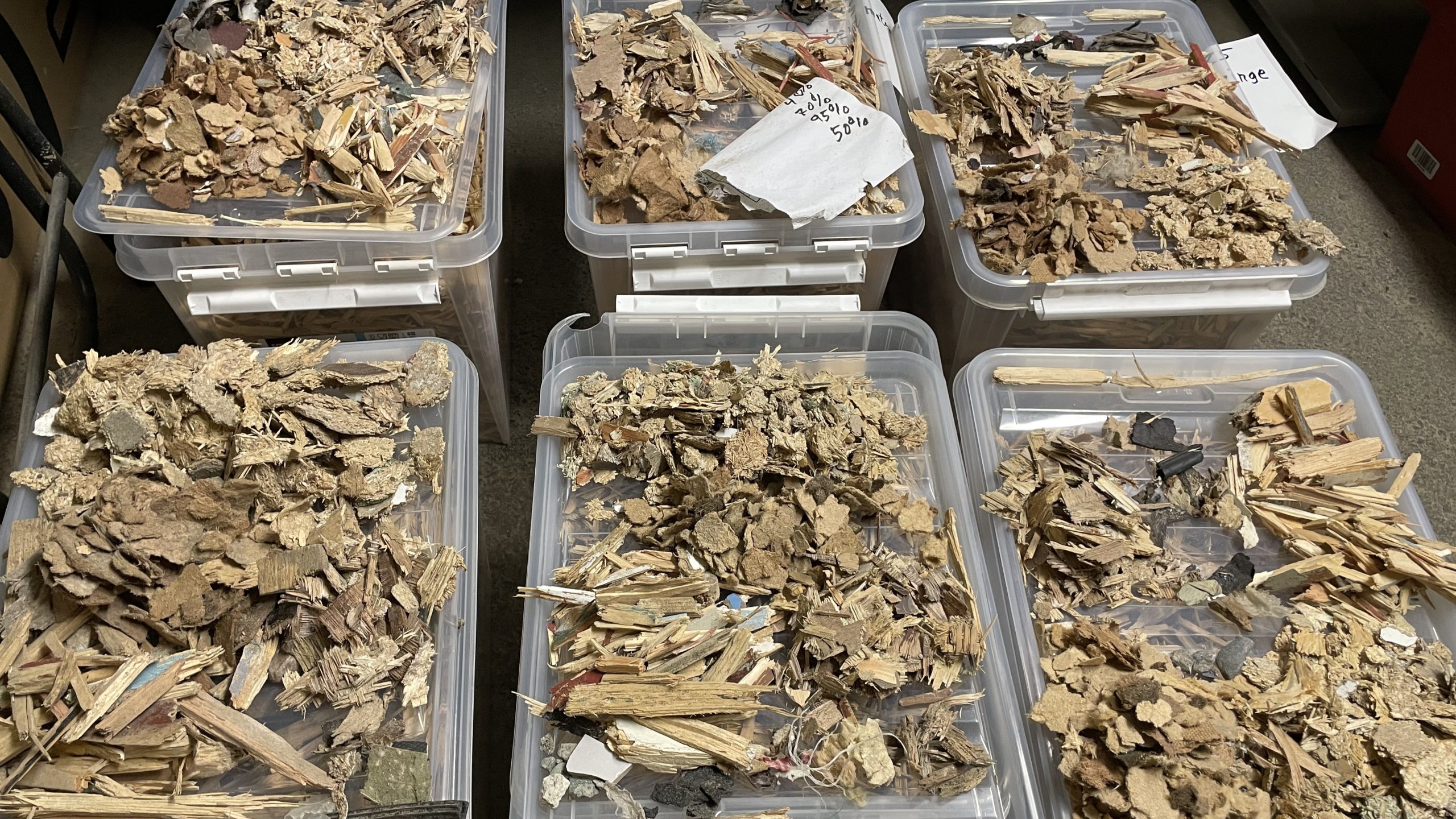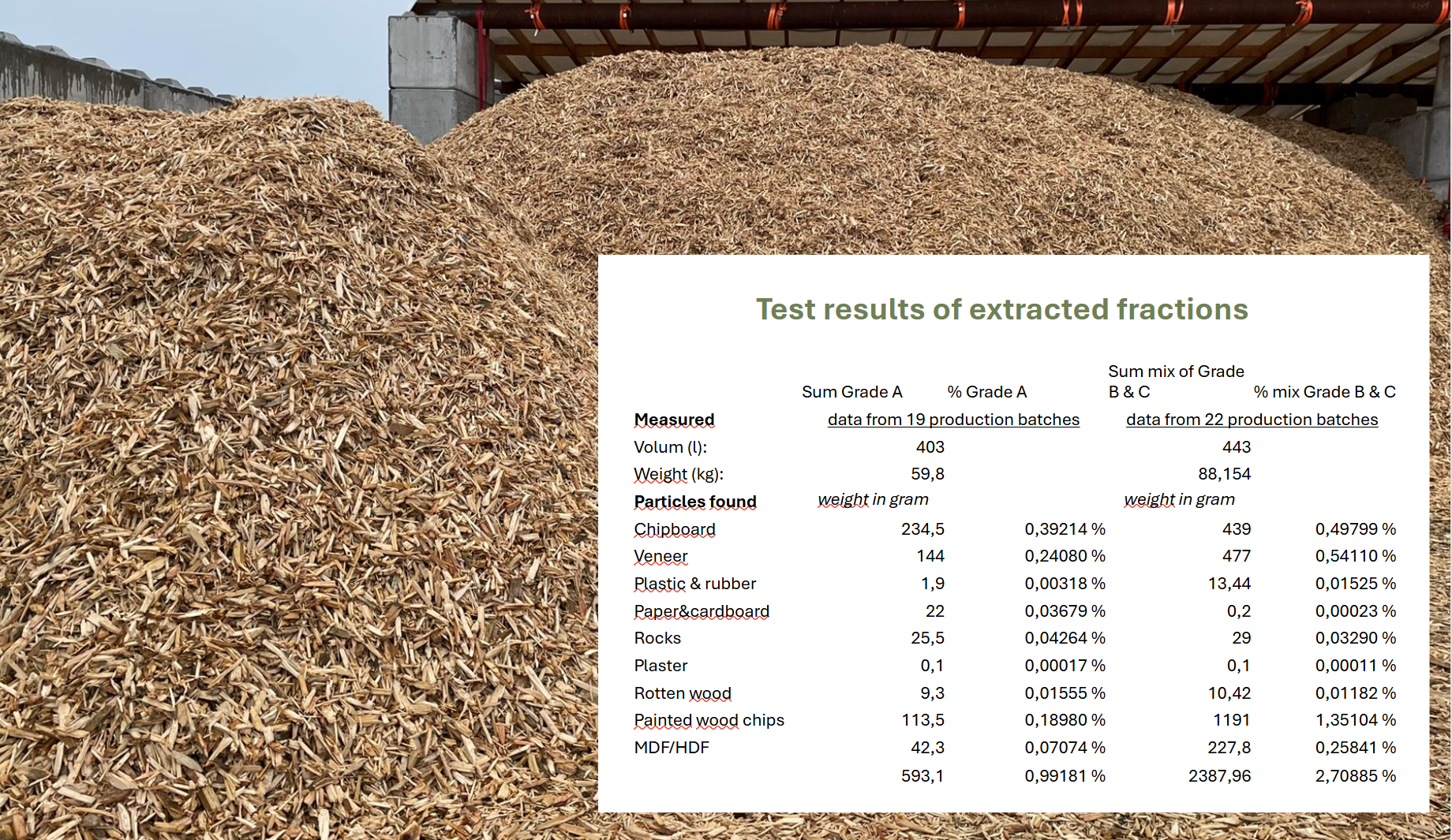Our Research and Development is Measured Against the Following Success Criteria:
- Profitable material recycling
- Increased material recycling rate
We have a full-scale production facility for material recycling of wood waste in Orkanger, which has been operational since November 3, 2023. At this facility, we conduct end-to-end testing with different shredders, sifters, magnets, metal detectors, and AI models, in addition to volume production of secondary raw materials. The facility has a processing capacity of approximately 50 m³ per hour and has provided us with a wealth of relevant data since its startup.
We have worked with contractors, demolition companies, waste management companies, wood panel manufacturers, and architects to understand where in the value chain the greatest potential lies for increasing the recycling rate of waste wood and reducing the costs associated with material recycling.

Testing of new AI models on the sorting machine.
Profitable Material Recycling
There is more waste wood available than there are applications for it. This is the most important realization when it comes to achieving profitable material recycling. When there is more raw material than demand, prices are pushed down, making recycling unprofitable.
All actors in the value chain have a strong desire to increase the use of recycled materials to produce new products. However, the challenge is that existing technologies and waste processing methods have not been precise enough to meet the quality requirements for many products.
eco materials’ R&D focuses on creating profitable material recycling within the following areas:
- Increased precision in sorting
- Smaller and more efficient sorting facilities that reduce investment and operating costs
- Evaluating the entire value chain from collection to production to identify where the greatest savings can be made
Increased material recovery
Understanding the requirements of secondary raw material as a means of production in various products is essential for increasing material recovery rates. Eco materials R&D toward increasing material recovery rates investigates:
- Production processes that make the secondary raw material suitable as a production mean in several new products
- Increased traceability and documentation that reduces risks associated with using the secondary raw materials in existing production lines
- Wholistic evaluation of the entire value chain from collection to production in order to identify the sources of material loss
We have tested production throughout an entire year with all the weather elements that operating in the Central Norway region entails. With temperature variations of +30c to –21c, snow and ice, rain and wind, we have gained valuable insight into the external challenges affecting material properties, material recovery and recycling plants.
Mapping material properties
Knowledge about the materials found in waste wood and how they may change physical properties under different temperatures and humidity levels is crucial for building an efficient material flow and AI models. We have divided our R&D in this area into the following categories:
- Wood-based products such as solid wood and wood panels, and the factors that may influence the recycling rate and cost. This includes, among other things, heat, moisture, and frost.
- Unwanted objects such as plastic, metal, insulation materials, minerals, and chemicals.
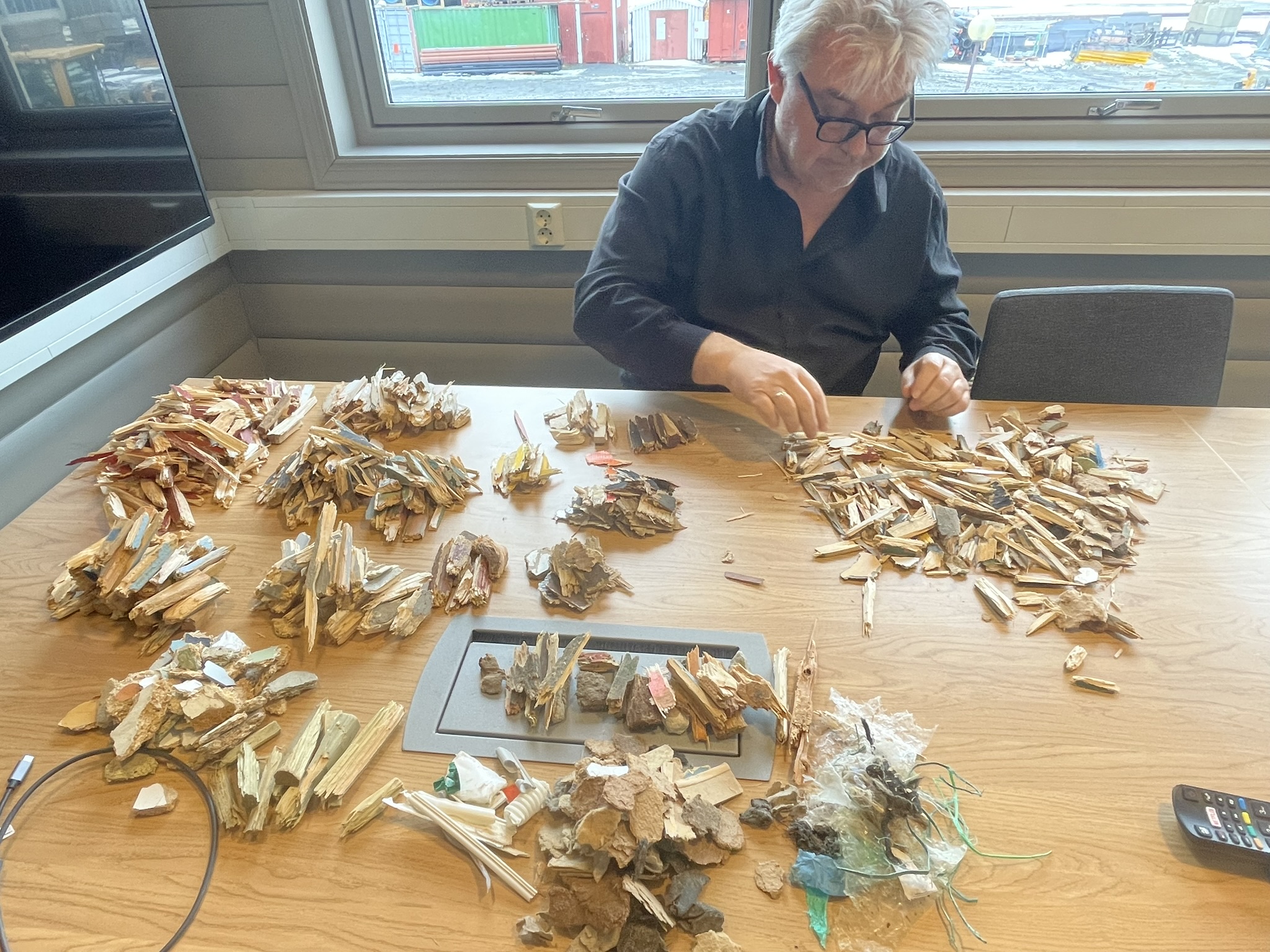
Manually defining unwanted elements for machine learning
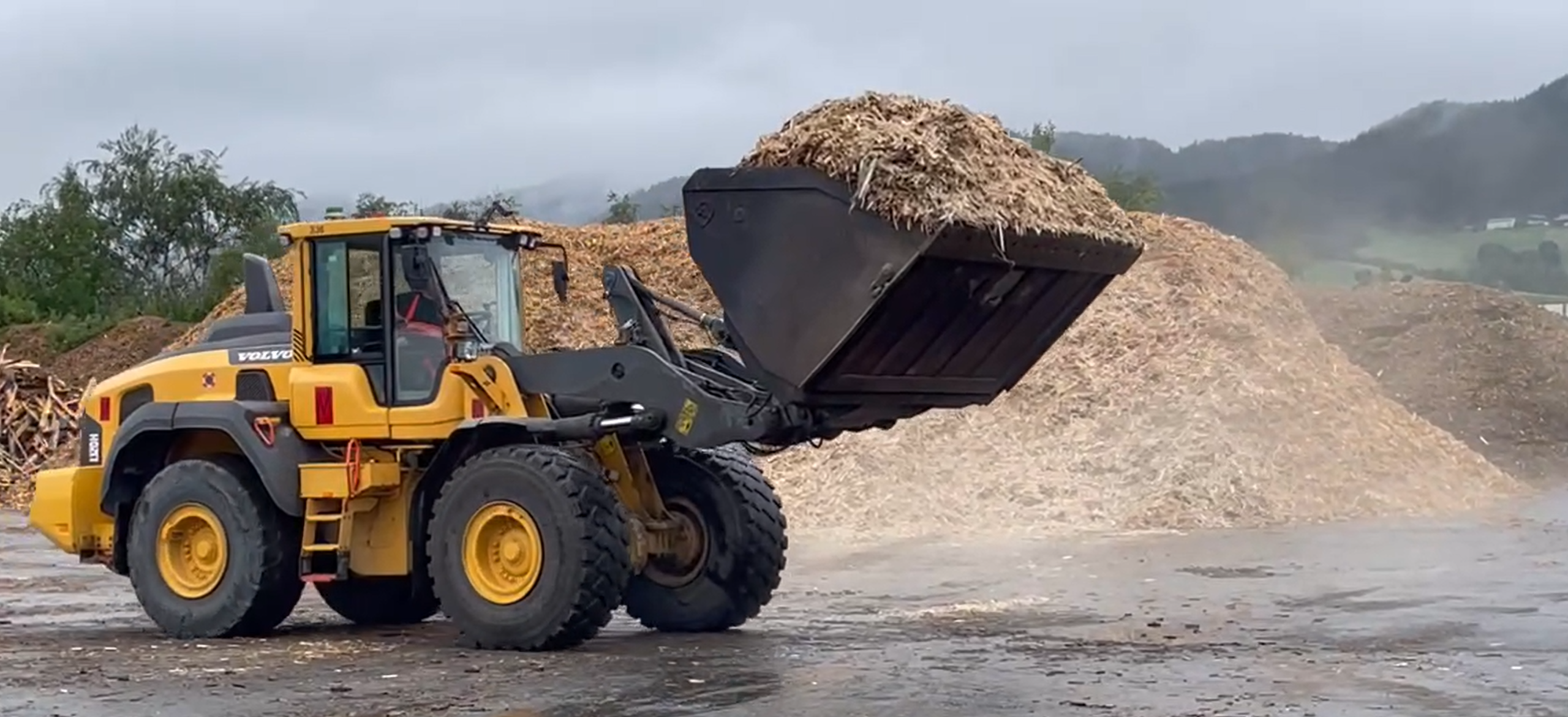
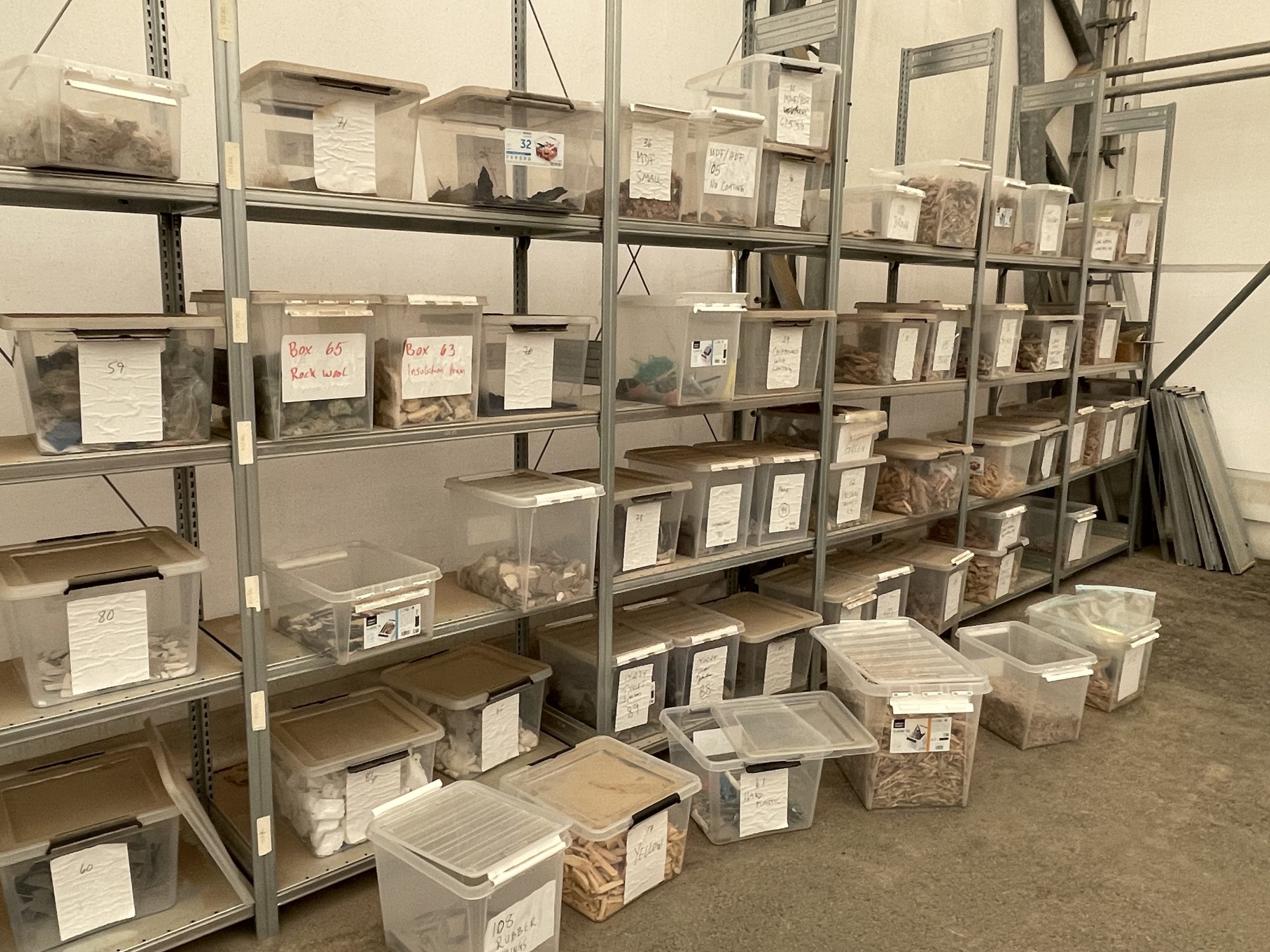
Test materials used for analyzing different AI model sorting abilities
Use of AI for sorting
The core of our technology lies in the ability to detect and determine the correct action for objects in a material flow. We have tested both self-learning and static models in order to find the best fit for various conditions. The focus areas for R&D regarding AI are:
- Which models are most precise based on the materials they need to sort and at times of rapid variations in the material properties
- What affects the AI model’s ability to make correct decisions, quickly and precisely
- Training on relevant products under relevant conditions for mass production
Removal of metals
Removal of metal is considered a key factor for all secondary raw materials, with the exception of incineration in large industrial facilities. In order to control which residual metals may be present in the secondary raw material, we have chosen to combine the use of magnets and metal detectors. Our experience with Eddy Current technology is that it is expensive, large, and does not provide sufficient precision for most products that can utilize secondary raw material produced from reclaimed wood. The main areas for R&D in metal removal are:
- Guarantee the maximum size of residual metal materials in the raw material
- Reduce material loss during metal removal
- Develop robust metal detectors that operate reliably in harsh environments


Test of shredding and sifting in -16 c degrees

Shredding and sifting
Shredding is the first step in the processing of waste wood and has a significant impact on the material quality and cost. In our experience, there is limited market knowledge of shredding processes in regard to increased material recovery goals. Manufacturers of shredders are primarily encouraged by waste companies to expand volume capacity, rather than the shredding precision essential to effective sorting in the subsequent steps of material recovery and recycling. The focus areas for R&D in shredding and sifting are:
- Shredders that deliver high geometric precision
- Wood chip geometry that results in effective material flow in the sorting process and which increases the volume in a camera-based sorting system
- Reducing material loss
Removal of light particles
Light particles with irregular flight patterns (dust, thin plastics, paper, and small MDF pieces) are not ideal for removal using optical sorting. They interrupt sensors and reduce the precision of sorting by blocking the cameras’ view. eco materials has developed our own system for removing these light particles from our sorting process. Effective systems are available on market, however, these are often large and costly in comparison to the amount of material that needs removal. The main areas of R&D for shredding and sifting are:
- Development of small, cost-effective systems
- Reducing particles that have negative implications on the sorting machine and/or particles that the machine is not suited for removing
Testing and documentation of the end product
The key to increased material recovery and lucrative recycling is to create products from waste wood that can be used as material input in multiple production streams and end products. We do not only deliver the technical mechanisms for sorting, but the entirety of the production process that enables effective production of secondary raw materials from waste wood. The focus points of R&D in testing and documentation are:
- Complete process for production of secondary raw materials that meet requirements of multiple end-products that utilize wood chips as an input factor in their production
- An approved end-of-waste process for products
